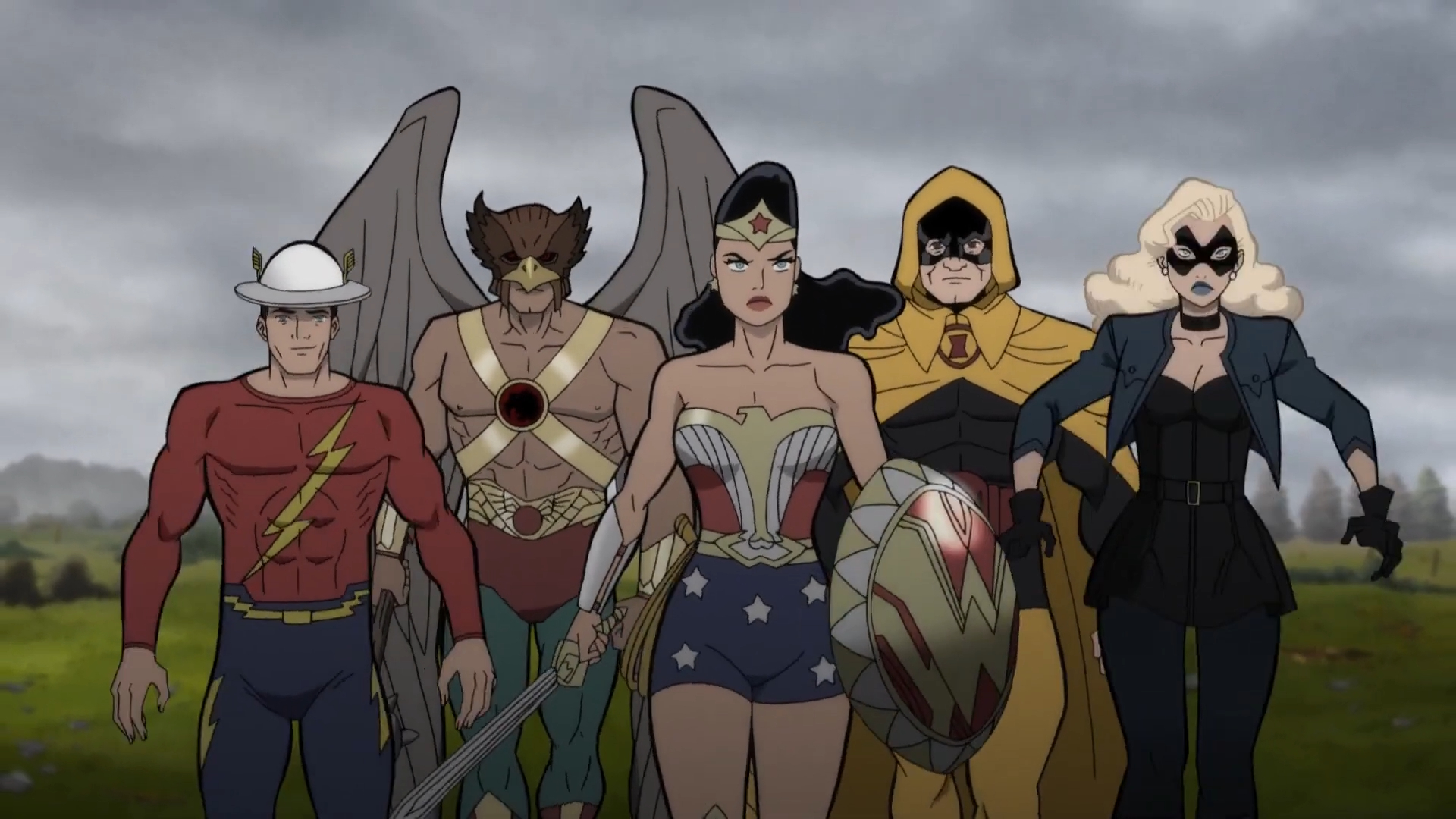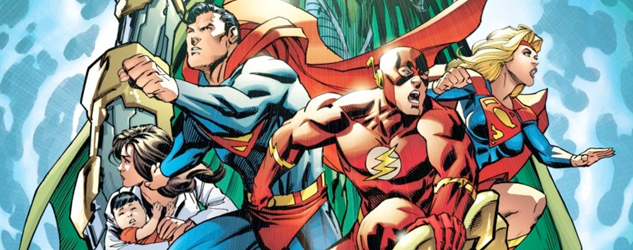Warner Brothers Animation’s latest DC movie is only the second in the past 14 years and 41 films to feature the Flash as the primary point-of-view character (the other being 2013’s Justice League: The Flashpoint Paradox). That both Justice Society and Flashpoint involve some interesting affects from time-travel, it’s reasonable that the Flash fills this role given his time-travel escapades in the comics.
Justice Society: World War II
Publisher: Warner Brothers Animation
Casting & Voice Direction: Wes Gleason
Writers: Jeremy Adams and Meghan Fitzmartin
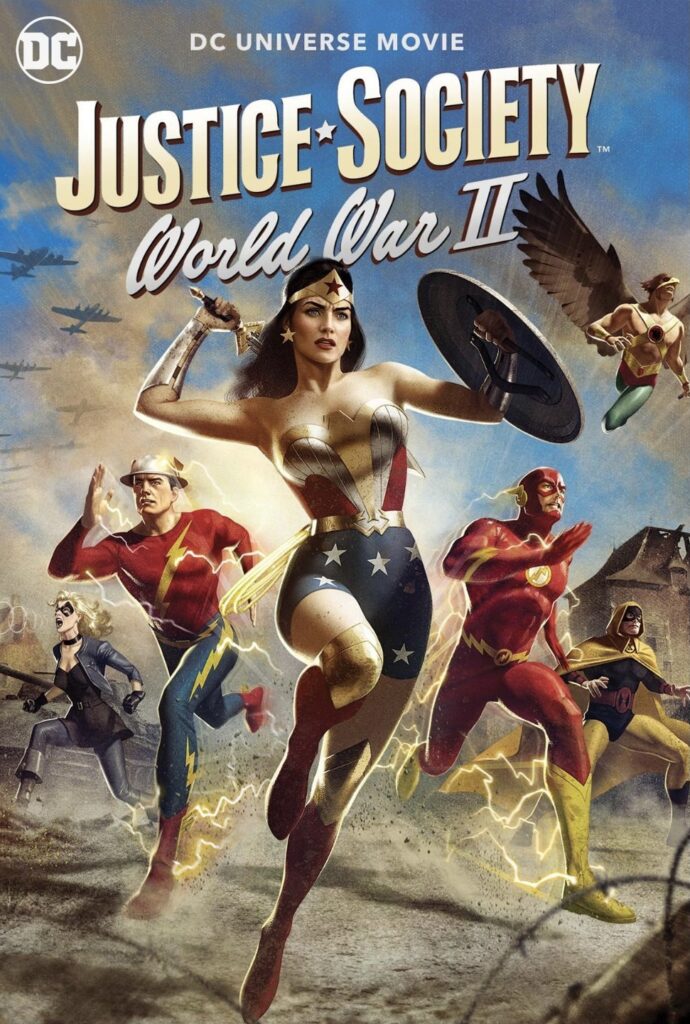
Before continuing, note that this review will contain minor spoilers of Justice Society: World War II.
The action begins with what appears to be a flashback, as President Roosevelt (FDR) is being briefed on Hitler’s obsession with finding magical artifacts, and the U.S. government’s planned response, a team of enhanced individuals including Rex Tyler (Hourman), Dinah Lance (Black Canary), Jay Garrick (the Golden-Age Flash), Carter Hall (Hawkman), and leader Diana of Themyscira, aka Wonder Woman.
The designs of these flashback scenes, combined with the music, do a fantastic job of portraying a 1940’s aesthetic, with a muted color palette and retro-looking character designs. Kevin Riepl’s sweeping, dramatic, and triumphant score are the perfect accompaniment to these scenes, immediately evoking a sense of classic World War II movies.
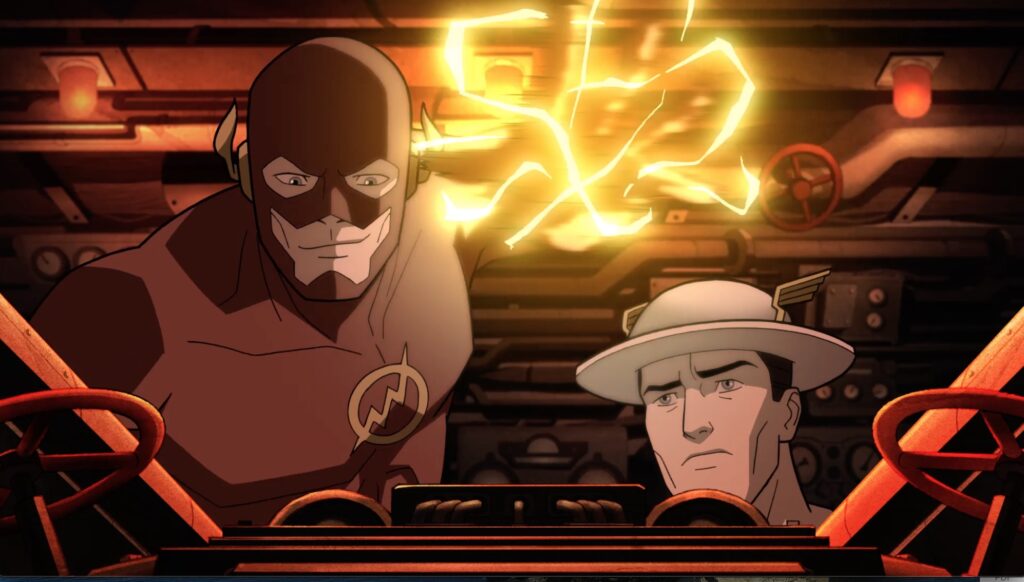
The action takes a quick turn, however, to “present day” as Barry Allen and Iris West go to the park for a picnic in what Barry describes as “…our first trip to Metropolis.” This line alone makes it clear that this movie stands alone from any previous movies in the DC Universe Animated Original Movies series, and this knowledge is solidified when Barry rushes to help Superman in a fight against Brainiac, and their dialogue indicates they have not teamed up before.
These scenes are brightly colored, with clear blue skies and a diverse array of eye-popping colors, which is a set-up to contrast them against what’s coming next, as Barry’s team-up with Superman is short-lived after Barry accidentally runs so fast that he runs all the way to France during World War II, accomplished by following a mysterious figure he sees and hears while in the Speed Force. Long-time DC fans will recognize the character and his symbol right away. However, Barry doesn’t appear to recognize him, once again adding more evidence that these events must be taking place early in the Flash’s career.
The scene changes quickly, and Barry finds himself amongst a group of super-powered government agents (the response team mentioned in the introduction), lead by Wonder Woman with help from American serviceman Steve Trevor. Oddly, Barry doesn’t recognize any of the heroes from what he theorizes is his past but agrees to help them fight Nazis while they all work on a way to help him return home.
It is in the dreary, gray, and always cloudy World War II setting that most of the remainder of the film takes place, and where the character relationships are more deeply explored. In addition to the natural connection between Wonder Woman and Steve Trevor, there’s some romantic tension between Carter Hall and Dinah Lance, even though Carter mentions that he is searching to find his soulmate he’s known for thousands of years. Jay Garrick and Barry also have an interesting connection, and while Jay in the comics usually acts as a father figure to Barry, in this situation the relationship is more even, as both speedsters have learned tricks the other hasn’t thought of. Of all the characters, Rex Tyler is the one who seems a bit apart from the rest, and that choice seems deliberate as his powers only last for one hour each time he takes his Miraclo serum, and after that, he’s of little use to the team until he recovers. There’s also the enigmatic Shakespeare, an army reporter attached to the team and who has been keeping some pretty big secrets. It is through Shakespeare that Barry figures out exactly what is happening to him and helps explain why he’s never heard of the Justice Society before. Again, long-time comic readers, especially those familiar with an early tale from the Flash’s Silver Age comics run, will have seen this surprise coming, but it was still a fun twist when it is revealed, as is the unexpected introduction of another famous DC hero, although the surprise is spoiled by looking at the art on the back cover of the home video boxed set.
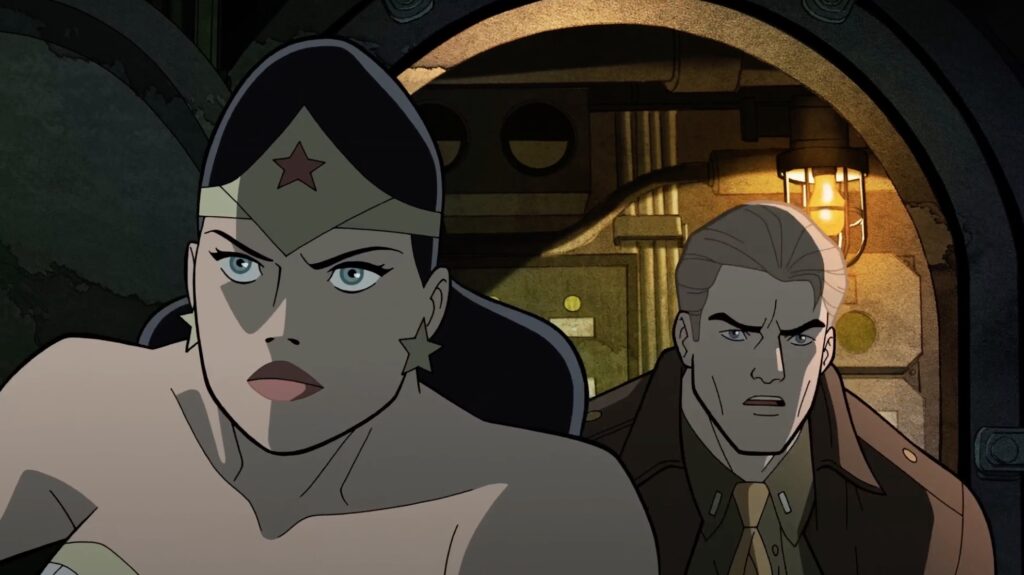
For comics fans, it’s really great to see animated versions of some of the lesser-utilized characters from DC’s long history, such as Hourman and the Golden Age Flash. The real stars of this animated movie, however, are Wonder Woman, voiced by Stana Katic, and Barry Alen, voice by Matt Bomer. Katic gives Wonder Woman a commanding presence and her choice of accent, unlike any other character in the movie, makes it clear that Diana comes from another place that has an almost magical quality to it. While primarily known for her live-action performances, Katic has done voice-work in the superhero genre before, providing the voice for Lois Lane in Superman: Unbound (2013) and Talia Al Ghul for the Batman: Arkham City video game (2011). Bomer has also done some voice-work before and was the voice of Superman in the 2013 animated movie Superman: Unbound. Katic’s and Bomer’s shared history on Superman: Unbound undoubtedly helped both actors in the scenes between Wonder Woman and Flash; there’s a tense relationship at the beginning but it gives way to mutual respect and trust.
Of the remaining voice cast, all of whom help add personality to the characters, the true standouts are Chris Diamantopoulos as Steve Trevor and Elysia Rotaru as Dinah Lance (Black Canary). Matt Mercer, recently famous online for his Critical Role series playing Dungeon and Dragons on YouTube, gives Rex Tyler a strong presence in what is a relatively small role in terms of screen time.
The end of the film sees Barry returning where he belongs, in the instant he left during the team-up with Superman against Brainiac. With Brainiac defeated, Barry suggests a more permanent team-up of heroes, potentially setting the stage for a new era of DC animated movies.
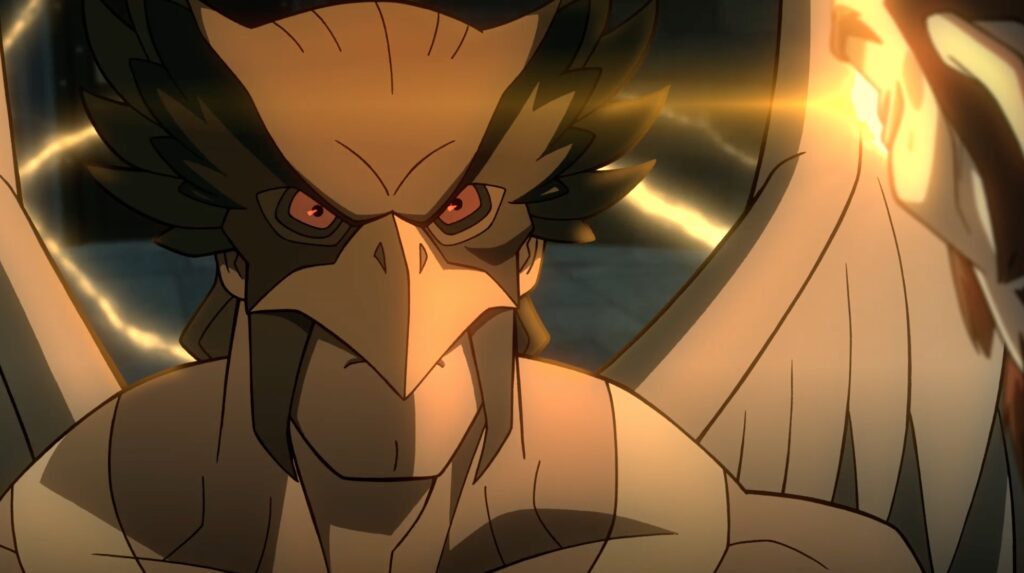
Justice Society: World War II is available for streaming on a variety of services currently including YouTube, Google Play, Vudu, and Amazon Prime. The home video version was released this week in a variety of formats including a 4K Ultra HD + Blue-Ray + Digital Code combo pack. As a fantastic bonus on the physical disc version, the Blu-Ray provides an assortment of special features including: Interviews on the storytelling and creation of the movie; a sneak-peak of the next DC Universe Movie, Batman: The Long Halloween, Part One; two bonus cartoons from the DC Vault; and, perhaps best, a new DC Showcase Short featuring Kamandi: The Last Boy on Earth. As a fun treat for those who watch the Kamandi short, there is a tie-in to the main Justice Society: World War II movie for sharp-eyed viewers.
Martin Thomas
martin@comicattack.net
Disclaimer: ComicAttack was provided with a copy of this movie for review purposes.

